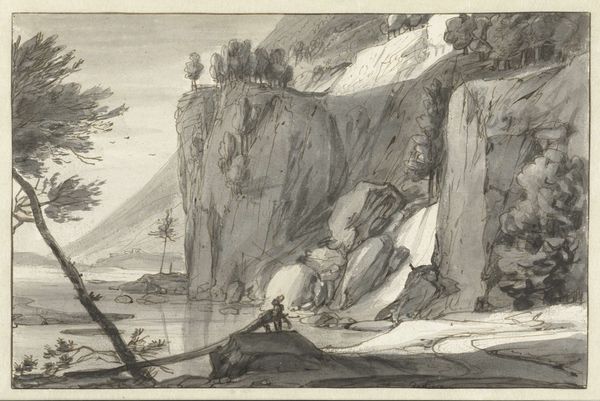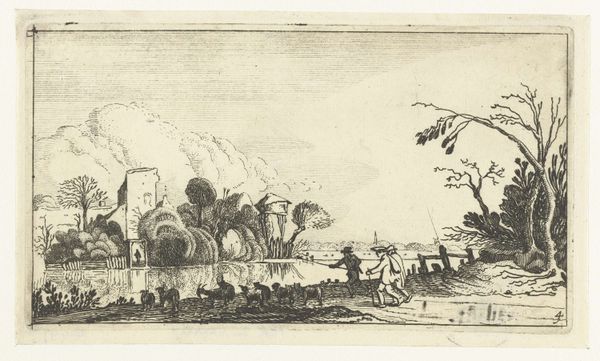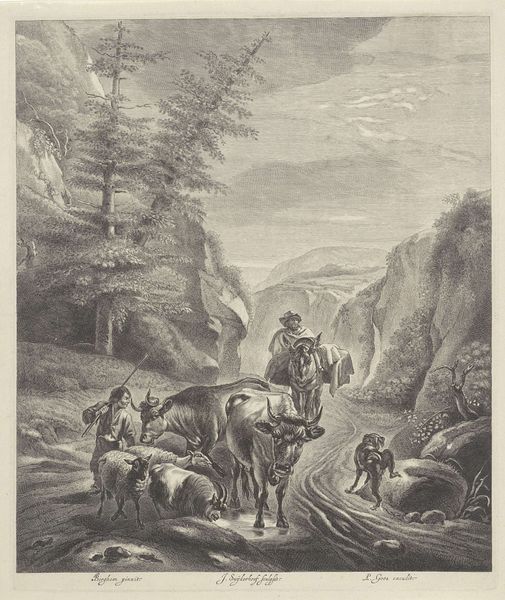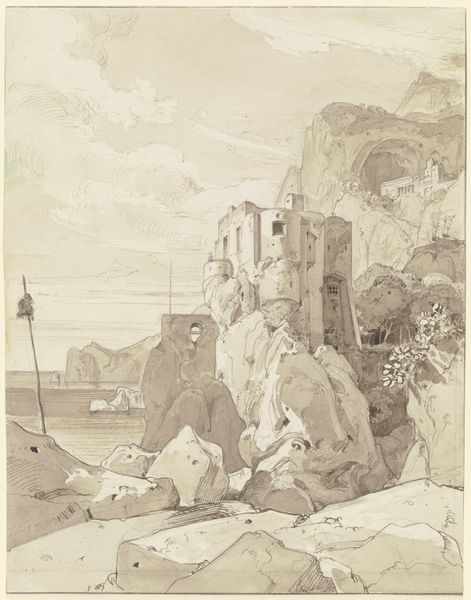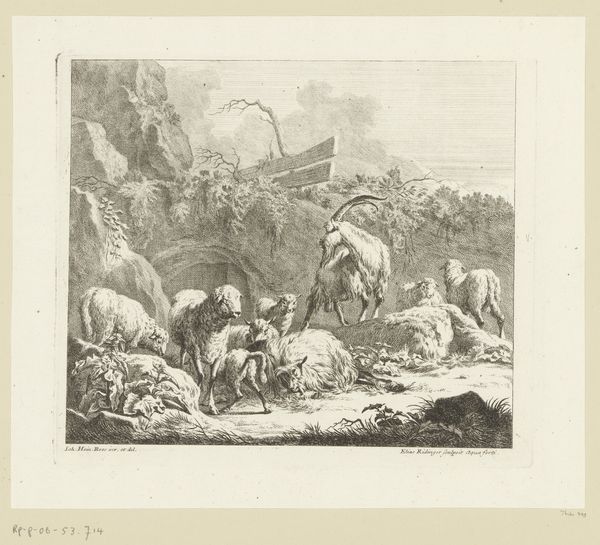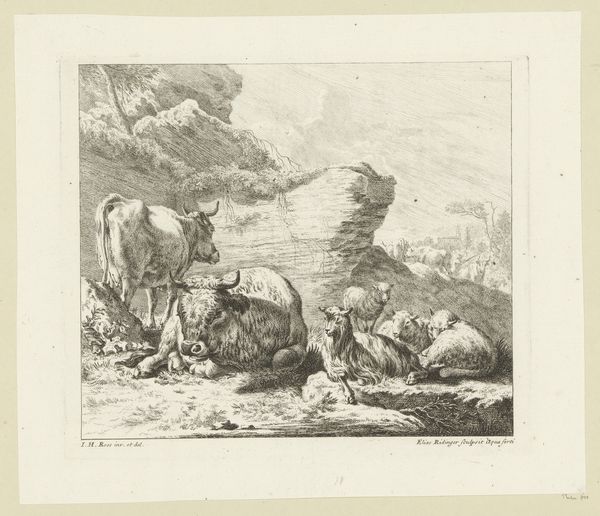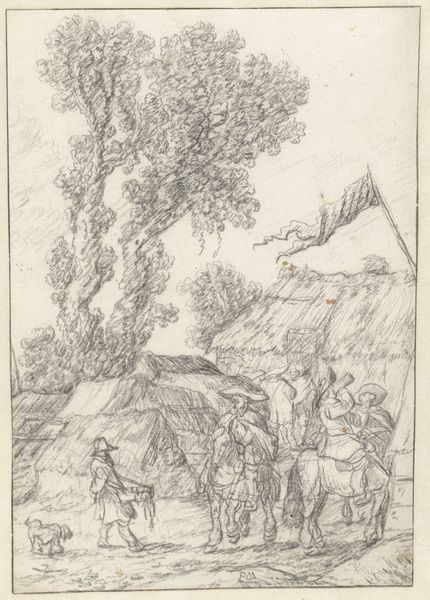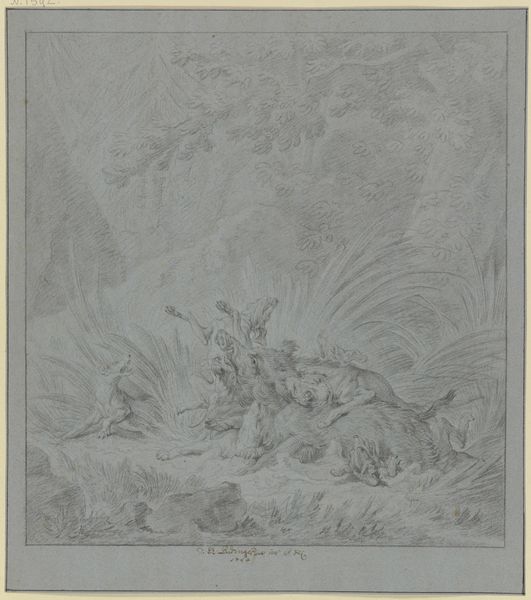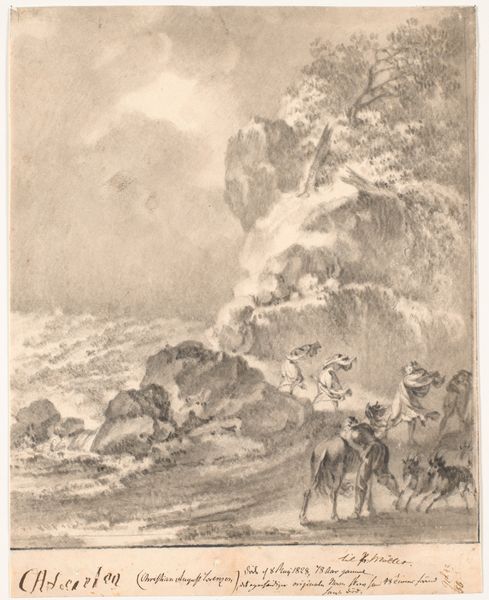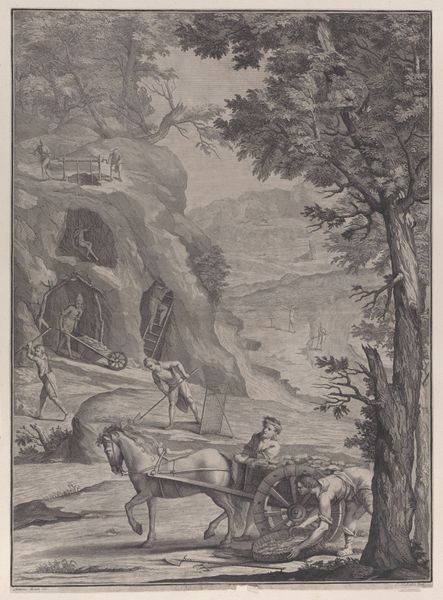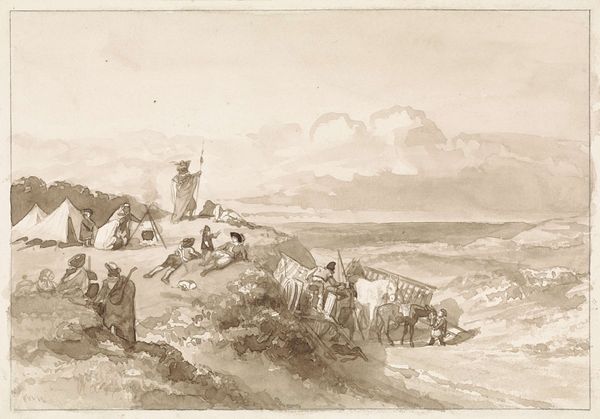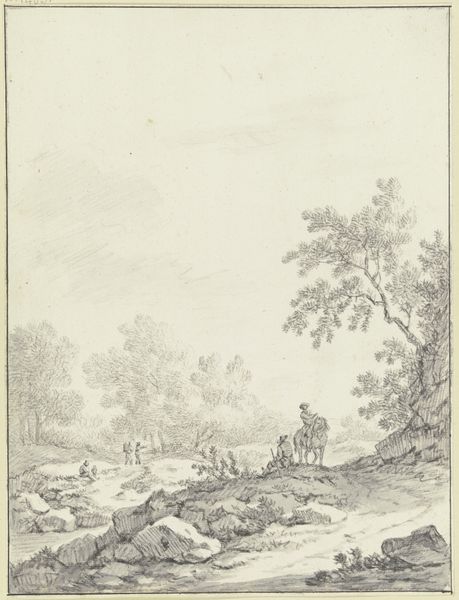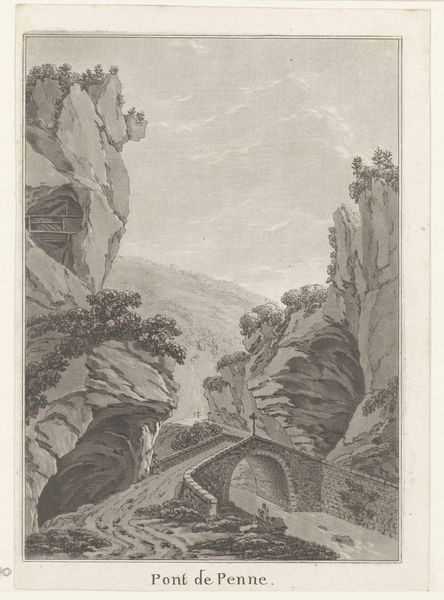
Herder met koeien en schapen in een Italianiserend landschap 1646 - 1672
0:00
0:00
adriaenvandevelde
Rijksmuseum
drawing, pencil
#
drawing
#
light pencil work
#
quirky sketch
#
dutch-golden-age
#
pencil sketch
#
landscape
#
figuration
#
personal sketchbook
#
idea generation sketch
#
sketchwork
#
pen-ink sketch
#
pencil
#
sketchbook drawing
#
genre-painting
#
storyboard and sketchbook work
#
sketchbook art
#
realism
Dimensions: height 155 mm, width 118 mm
Copyright: Rijks Museum: Open Domain
Editor: This drawing, "Herder met koeien en schapen in een Italianiserend landschap," attributed to Adriaen van de Velde, and created sometime between 1646 and 1672, it has a very dream-like, hazy quality to it, doesn't it? I’m curious, what do you see in this piece beyond just a pastoral scene? Curator: Absolutely. The 'Italianizing landscape' is key here. Consider the Dutch Golden Age and its complex relationship with Italy. Artists like van de Velde weren't just depicting scenery; they were engaging with ideas of cultural capital and the idealization of the "South." But who gets to claim that idyllic vision, and at what cost? Is this a scene of peaceful harmony, or does it mask the labor and social hierarchies inherent in pastoral life? Look closely—who is represented, and how? Are we seeing a romantic fantasy, or a commentary on class and power structures? Editor: That's fascinating. I hadn’t thought about it in terms of power. I guess I was just seeing the pretty landscape. But now I'm wondering about the shepherd… his role in the landscape. Curator: Exactly. He's not just part of the scenery; he's a worker embedded in a system. What does it mean to represent him as such a small figure dwarfed by the landscape and livestock? Van de Velde lived during a time of vast economic change. Editor: So it’s not just about a pretty picture, but a deeper reflection on society and the people who work within it? Curator: Precisely. Art often functions as a mirror reflecting the dominant ideologies, but it can also provide space for critique and re-imagining those structures. This is something to keep in mind in order to understand history, cultural appropriation, or class imbalance. Editor: I never considered the social commentary embedded within landscapes. Thanks for sharing a broader point of view. Curator: It’s vital to challenge initial impressions, probe for hidden narratives. Art serves society; this one makes that fact particularly visible.
Comments
No comments
Be the first to comment and join the conversation on the ultimate creative platform.
